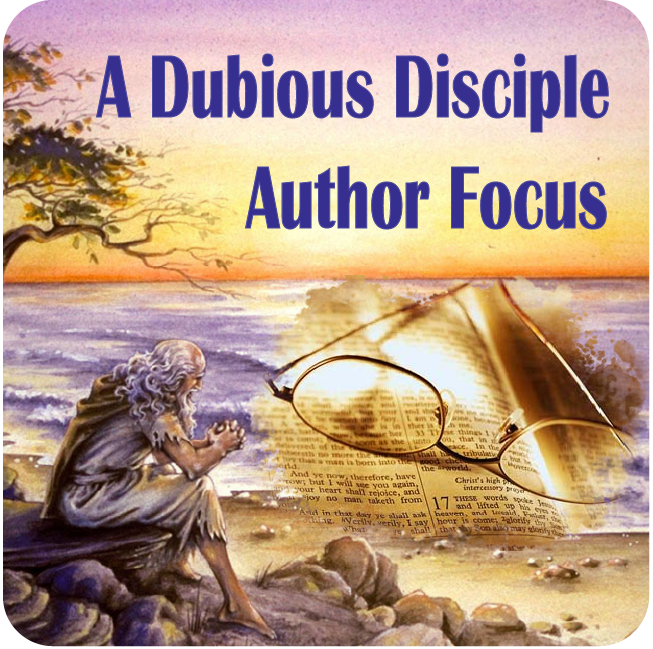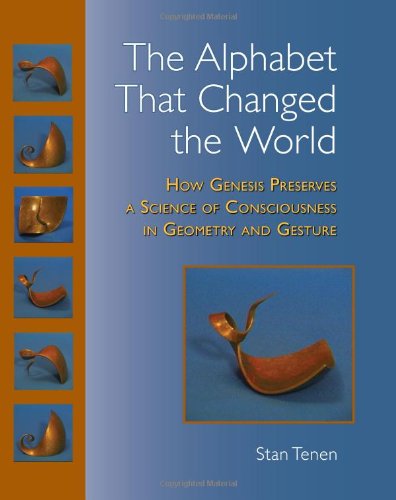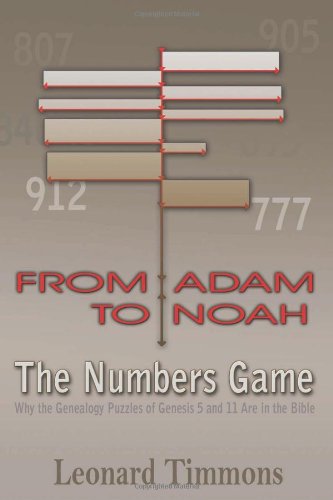Focus on the Author: Stan Tenen
A couple weeks back, I posted a review of a fascinating theory about the evolution of the Bible. I very much enjoyed the book, but could not get behind the theory, as the research seemed as yet unsubstantiated.
Stan prepared a thoughtful rejoinder, and posted it as a comment on the thread, but I think it’s worth further highlighting. This, then, from Stan Tenen, author of The Alphabet that Changed the World.
*********
Hello readers,
First, let me express my thanks and appreciation to Lee Harmon for his thoughtful review of The Alphabet That Changed the World. In no particular order, there are a few points I’d like to add.
One way to evaluate new ideas is to ask one’s self what it would mean—what would the implications be—if the proposal were true. Objective science is often a matter of suspending disbelief long enough to check out ideas which may not fit easily into current understanding.
—If what I’m proposing is correct, and the letters come from hand gestures, then one purpose of these gestures could be to standardize and record mental and physical exercises, dances in the mind and dances in the world. (Possibly including Levite dances from Solomon’s temple, and possibly including some Sufi dances—in particular, Rumi’s description of the Mevlevi Sufi Round Dance. See Appendix M of The Alphabet That Changed the World.)
—Again, if I’m right, there could be a parallel between the function of a Bose-Einstein condensate in physics and a loving, caring, coordinated minyan, congregation, or communion. I’m proposing the possibility of an analogy between the near-absolute-zero temperature of a Bose-Einstein condensate, and the near-egoless participation in a loving minyan.
—I’m not asking anyone to take these (at best) informed speculations as true. I’m proposing that these ideas be tested. (We can discuss how they might be tested separately.)
As to how and when these ideas were lost, I think it’s likely it was due to 2000 years of erratic and often persistent persecution of Jews, Christians, and Muslims who knew of these deep teachings. (The Gnostics, for example, are no longer with us.)
For a highly readable history of what may have happened, I recommend James Carroll’s Constantine’s Sword.
What I’m proposing does not actually conflict with most established scholarship. I’m proposing that the “Bible stories” are essentially true. Their purpose is to preserve the tradition, and to preserve the deeper levels of meaning. The idea that the stories may or may not have been gathered from disparate sources is not addressed by what I’m proposing. Instead, I’m proposing that the stories—whatever their origin—are interwoven with the patterns in the letter-text (as I try to illustrate on pages 119-121 of TATCTW).
I’m trying to find a way to understand traditional Jewish, Christian, and Muslim perspectives, as well as perspectives of modern scholarship and what comes from the application of the scientific method—all at the same time.
For example: I’m proposing that the Indo-European language hypothesis is likely correct, but I’m also proposing that it applies more to spoken language than to written language. If I’m right, there is good reason for words like LeVaNah in Hebrew (meaning “white”) and aLBiNo in Latin (also meaning “white”). There is also an operational correspondence (though not a phonetic correspondence) between YH-VH in Hebrew (meaning “Lord”) and JEFE in Spanish (meaning “chief”). And so on, generally across the board—including all the Latin- and Greek-root languages. (This needs to be further tested and confirmed, so I’m currently working on a dictionary.)
The upshot of all of this is:
1) All of science and all of spirit are based on the Golden Rules, and in fact, God is not just love in the simple sense, but rather, the Lord-God is the process of loving-kindness raining down on us and filling our sails at all times.
2) Messiah/Moshiach is the emergent consciousness of a loving coordinated minyan/assembly/communion/umma—and this could be verified objectively (by experiments that still need to be performed).
Conscious Being / Moshiach
emerges from
Spirit / Shekhinah
emerges from
Vessel / Merkabah
emerges from
the Pool of the Mikveh
emerges from
a Loving Minyan
Coordinated by the Alphabet.
If what I’m proposing is valid, then the three Abrahamic covenants are like three separate vital organs in the same body politic, each performing a different function and with different needs, but all coordinated for the common good. This is a win-win-win model, not a zero-sum game.
There is much more. Please don’t take what I’m proposing on authority; please ask questions until you understand for yourself. This is a place where reason and faith can converge.
Best,
Stan
PS You can find much additional discussion in Meru Foundation’s eTORUS Archive at http://www.meru.org/Newsletter/journalindex.html.
Recommended reading:
Arthur M. Young, The Reflexive Universe
Aryeh Kaplan, Meditation and the Bible, ch. 2, “Floating Distraction”.
(All works by Aryeh Kaplan are recommended).
For basic knowledge on the Hebrew letters, see Wisdom in the Hebrew Alphabet by Rabbi Michael Munk, and its Appendix by Rabbi Nosson Scherman.
And for historical context, as mentioned above, James Carroll’s Constantine’s Sword.
Focus on the Author: Leonard Timmons
Author of From Adam to Noah: The Numbers Game
A while back, I reviewed Leonard’s book, and gave it a three-star review, considering it a rather fantastic theory. Leonard promised a response to my review, and I’d like to share that with you now.
My response to your review follows:
What do the ages of the first humans in the Bible mean? Could people really have lived that long? Leonard Timmons has found an ancient calendar hidden in these numbers, and feels this discovery is key to understanding the Bible.
Actually, my position is that my understanding of the Bible is responsible for the discovery. “One of the things we must accept at this point is that the Bible writers did not want us to find the calendar. They hid it so well that it was almost impossible to find. Why? And why did I find the calendar when so many others failed to, even though it was hiding in plain sight? My answer is that I was willing to put in the time to figure out what the numbers meant, and I was willing to look at the world through the eyes of the people who wrote the Bible. I was trying to look at the Bible through the eyes of its writers long before I solved this puzzle. It was this willingness that allowed me to solve the riddles of Noah’s ark, the Garden of Eden, and Revelation 13. I found the solution to those riddles first, and that allowed me to almost feel the solution to this one.” Page 50.
Timmons’s calendar is constructed by charting, on a timeline, the births and deaths of the men between Adam and Noah, fudging a little here and there to create a few more meaningful points on the timeline,
I went out of my way to not change a single number. The only place where I changed anything was the life of Enoch. I show that if his age was 364 years, we would have a perfect 1×56, 2×56 and 3×56 sequence. The writers do this to introduce us to the 364-day year and to let us know that they know that the year is 365 days long. This idea is shown, but does not affect anything that follows.
So my argument is with the word “fudging” which implies that I knew that a calendar was present in the numbers before I actually discovered it. I can tell you that is not so. When I presented my early results to the monk a the Monastery of the Holy Spirit, I did not yet consider it to be a calendar puzzle. I didn’t know what it was. I did not mention that there was a calendar hidden in the ages. The monk volunteered that a calendar was hidden in the numbers. I thought this might be insightful, but certainly premature to say. This was the first time anyone mentioned a calendar. My mind was completely open (an idea that helped me solve many of the riddles of Genesis 1-11, in my opinion). I did find a calendar, but I did not intend to find one as you suggest.
and then discovering that it breaks down into four portions of 364 years plus one 5-year portion. Turn that into days, and you have a 364-day year, plus a 5-day seasonal correction after four years (think of our leap day). 364, for calendar aficionados, is the Jubilees calendar from the Qumran texts, so-liked because it plays nice, dividing neatly into 52 seven-day weeks.
Timmons’s analysis is founded on arithmetic combinations of round numbers (such as 500 or 1000) and of the number seven. Lamech’s age at his death, 777 years, appears to be a clue. For example, 56 is a nice number because it is 7×7+7. 84 is an excellent number because it is 77+7. Seven is recognized as God’s number, a perfect number
I don’t say this. Don’t know where you get this idea. Could you provide a reference?
, the number of days in the week. Readers of Revelation are quite aware of how important seven, and in particular three sevens (777), are in Biblical thinking.
Timmons is correct that numerology
Please note that my book is not about numerology, but numerical symbolism. I think you can trace the numerology of the Bible back to this puzzle, but I don’t think numerology plays a significant part in this puzzle and no part in my book. I say that I suspect that some number combinations might seem mystical to the authors (354 days of the lunar year being the sum of 123 and 231; 1461-(9×123) = 354) but that’s because it’s just amazing to me that these numbers work out just right. It may be enough reason to believe that our solar system was designed though we know these numbers have changed over the history of the earth-moon system.
was important to the ancients, often used as a means of Biblical enlightenment. Consider the 666 of Revelation, and the miraculous catch of 153 fish by Jesus’ disciples. Timmons takes a stab at solving both of these riddles, which might be a mistake on his part; while no convincing solutions to the second puzzle have been offered, making the 153 puzzle fair game for speculation, scholars are nearly unanimous and surely correct in solving the 666 puzzle.
Since you have a book on this, I did not expect that you would accept my interpretation. I did not see any mention in your link of the parallels between Revelation 13 and Daniel 7. Do you have an explanation? Does anyone?
In any case, I would not be surprised at all to discover that there is meaning in the ages of the earliest humans in the Bible. It’s far more likely that the numbers have some sort of meaning to the authors than that people actually lived that long! However, even after reading Timmons’s book, a hidden calendar code seems a bit too conspiratorial for my taste. Timmons may be on the right track with his “meaningful numbers,” but attributing the whole thing to a hidden calendar doesn’t feel right to me.
I didn’t really expect that your biblical positions were based primarily on emotion. I read a number of your reviews that were reasoned and logical. So this surprised me.
That is, however, the book’s premise: Not only is there a calendar hiding within the ages of the earliest humans, but it has been purposefully hidden. This is not just numerology, it’s a devised puzzle, and (in my opinion) an inelegant one. The authors were not content just to lay out a calendar; they carefully hid the calendar, purposefully confusing us, swapping the meaningful number 56 here and there with 65 (the reverse of its digits) to confuse us, doubling and halving numbers here and there to bewilder us.
So who imbedded these puzzles? Perhaps collators of the Bible while in Babylonian captivity, or shortly after they returned to Jerusalem? That sounds somewhat believable, but Timmons thinks not;
Actually, I did not address this, per se. It is my position, and I state this in the book, that these scriptures were edited and re-edited by people who understood them. So the final edit could have been done during the captivity in Babylon, but I don’t know this history. Why would I say?
he argues instead that the Bible should be thought of as an ancient educational textbook for the enlightened, a sort of test to divide good puzzle-readers from bad. The Bible is a book of riddles to help the initiate develop his talent for insight. We’re not just talking about the creation stories; the Bible’s authors have encapsulated hidden knowledge in its texts from Genesis to Revelation! An “insight school” that lasted a thousand years! (Timmons actually suggests thousands).
I suspect that you misunderstand me here. There are schools of thought. There are ways of doing things. Jesus had his school and that was an actual school. Elijah and Elisha had their schools that were actual schools. The “insight school” is a school of thought. I’m pretty sure I make this clear in the book. “In his book Who Wrote the Bible?, Richard Friedman makes clear that ancient Israel had two schools of thought about what our relationship with God should be. The first school believed in angels, quick wit, and direct intervention by God; the second believed in laws, plodding, and obedience to God.” Page 217. It is trivially easy for a school of thought to last a thousand years. Any “-ism” can last for a very long time. Judaism, for instance. Christianity, for instance. Platonism, for instance.
Timmons rejects the Documentary Hypothesis (which proposes that the Torah was written by at least four distinct authors, none of them Moses). I cannot help but think he commits another error by pitting his puzzle theory against the Documentary Hypothesis; it seems far more reasonable to me that the Documentary Hypothesis disproves the ancient textbook idea rather than vice-versa.
Yet the Documentary Hypothesis has been rejected throughout Europe. See “Taking Issue with the Documentary Hypothesis” at the following link http://en.wikipedia.org/wiki/Talk%3ADocumentary_hypothesis This is what I heard from my contacts in Europe as well. My contacts in Australia still hold to the hypothesis.
Anyway, the hidden calendar is not really the important thing. It’s just a discovery that should prompt us to read the Bible differently;
Again, reading the Bible differently is responsible for the discovery of the calendar. I suspect that people come to this conclusion because I present the calendar first. But it was not first. Reading the Bible differently was first.
to reveal to us the surprising intellect and understanding of its authors.
Again, the reason I found the calendar was that I read the Bible as if its authors were very intellectual and had great understanding. I did not and do not look down on them because they lived thousands of years ago. I find this to be common among people who “follow” the Bible.
Free now to explore a deeper meaning in the scriptures than a literal reading, Timmons next launches into his interpretation of the Bible’s themes; how the ancients thought of demons, angels, soul, spirit, faith, even God … and it’s nothing like what we thought they meant. This insight helps Timmons decode stories like the Flood and the Garden of Eden, and he provides two creative and fascinating interpretations. Even Jesus’ parables and Revelation’s mysteries are revealed.
Again, I figured out what the Bible writers thought of demons, angels, etc. before I discovered the calendar. I decoded the flood story in the late 90’s (I provide a link to a newsgroup post). I discovered the calendar in the early 2000’s.
I found the book to be an interesting fringe theory, and fun with numbers (right up my alley), but not something I found convincing. However, my feeling is that there is surely a 4- or even 5-star book idea here, that Timmons’s interpretations are ingenious, but that he overreaches by claiming them to be the correct interpretation … as if the Bible writers actually meant their stories to be read this way.
Would I claim that my interpretations were incorrect? I am taking a position. I am advocating that the reader see the world from my position. Someone has to have the correct interpretation. It is my position that my view of the Bible leads to a verifiable result. So that should give it and my interpretations more weight than those that just make the reader feel good about themselves.
My book is very different, so I don’t really expect traditionalists to understand it. I read the Bible without emotion. With a complete open mind. With the idea that when the Bible writers describe the Tigris and Euphrates rivers and say that they flow opposite the direction that the real rivers flow, that they were not stupid. They understood geography. When I see people put the confluence of the rivers far upstream, they cannot think much of the authors or they think the text is massively corrupt (which is the same thing). Suppose we grant that these people might have been as smart as us. Or even smarter. Do they have enough information at hand to understand the world as deeply as our greatest philosophers? I think they did. That’s how I found the calendar and the meaning of the stories—I respected the authors.

Focus on the Author: Cheryl Petersen
Author of 21st Century Science and Health
//I hope to mix in the occasional author bio, or perhaps an author’s personal motivation/inspiration for writing a book. Authors, if I’ve reviewed your book (or if I have it for review) feel free to contribute a short post, if you’d like further exposure. To kick off this idea, here’s a short note from the author of 21st Century Science and Health. The Dubious Disciple review can be found at here. http://www.dubiousdisciple.com/2012/07/book-review-21st-century-science-health.html
When Cheryl sent a review copy of her book, I bluntly asked about her authority to basically rewrite the founding document of her religion. It’s a pointed question, to be sure, but Cheryl replied quite gracefully as follows:
Hi Lee,
The authority behind a revision was a tough tough question for me because I had nothing to go on except a persistent resilient internal demand that an update is sensible, practical, legitimate, and necessary.
I avoided revising for years, justifying my neglect with the fact that I’d risen in the church ranks and was heavily involved in what church authorities approved of. I was a Journal listed Christian Science practitioner, taught by a respected Teacher in the movement who also was on the Board of Directors. But, I could see and more importantly, admit, that my actions appeared futile and hypocritical. Why could I speak and write in contemporary words but insist readers read an outdated book?
To put it bluntly, I finally admitted I was following church authorities before I was following Christian Science.
In a roundabout way, it was the public that gave me permission to revise Science and Health. The public wanted a book they could read and understand, referring as nearly as possible to what Eddy dubbed Christian Science. It is all ironic now, because the public was basically telling me they didn’t want to come to me anymore for insight and healing, they wanted to read about Christian Science and get to know God on their own, with God.
Honest, moral, spiritually minded, scholarly, and courageous people in the public actually worked with me for years, until the revision had enough momentum that I was left to continue the project.
When it came time to copyright, my name was affixed to 21st Century Science and Health, because I have done the greater majority of the work.
There are some church members who feel adamantly that a revision is wrong, they absolutely can’t envision reading anything but Eddy’s last version of Science and Health. A very few people believe the Christian Science Board of Directors should be the only outlet for a revision however, I’ve had extensive communication with the Board and their mentality is excruciatingly afraid to admit to a revision. In fact, the fear and confusion was so predominant that I withdrew my church membership in order to break contact with that mentality.
I have studied extensively Bible revisions and history, however I firmly believe the Science and Health is not a Bible, nor is it part of the Bible. Therefore, my technique for revising is different.
I apologize for the length of my answer. Your question was excellent.
Sincerely,
Cheryl














 354 Circles
354 Circles
 603 Goodreads Friends & Fans
603 Goodreads Friends & Fans

 Hello! I'm an author, historical Jesus scholar, book reviewer, and liberal Christian, which means I appreciate and attempt to exercise the humanitarian teachings of Jesus without getting hung up on any particular supernatural or religious beliefs.
The Bible is a magnificent book that has inspired and spiritually fed generations for thousands of years, and each new century seems to bring a deeper understanding of life’s purpose. This is true of not only Christianity; through the years, our age-old religions are slowly transforming from superstitious rituals into humanitarian philosophies. In short, we are growing up, and I am thrilled to be riding the wave.
I avidly read all thought-provoking religion titles. New authors: I'd love to read and review your book!
Hello! I'm an author, historical Jesus scholar, book reviewer, and liberal Christian, which means I appreciate and attempt to exercise the humanitarian teachings of Jesus without getting hung up on any particular supernatural or religious beliefs.
The Bible is a magnificent book that has inspired and spiritually fed generations for thousands of years, and each new century seems to bring a deeper understanding of life’s purpose. This is true of not only Christianity; through the years, our age-old religions are slowly transforming from superstitious rituals into humanitarian philosophies. In short, we are growing up, and I am thrilled to be riding the wave.
I avidly read all thought-provoking religion titles. New authors: I'd love to read and review your book!
 Hi! While Lee writes the articles and reviews the books, I edit, organize, and maintain the blog. The views expressed here are Lee's but I'm his biggest supporter! :-)
Hi! While Lee writes the articles and reviews the books, I edit, organize, and maintain the blog. The views expressed here are Lee's but I'm his biggest supporter! :-)
Connect With Me!